Why site speed is a pipeline problem
If I lead a B2B service company, I know how unforgiving the funnel can be. A few seconds of wait time, a clunky first paint, a layout jump near a lead form - there goes a booked demo or RFQ. That sting is not abstract. It is money walking out the door quietly. The fix is not magic. It is site speed I can measure, improve, and tie back to pipeline without turning the team into web performance nerds. I will keep it simple, practical, and numbers driven.
Here is the core idea I keep in mind: speed is a business system. It changes how many people stick around to read the promise, start a form, book time, and convert. It also sharpens my analytics, so I can see which headline, offer, and proof point actually work. Faster pages remove wait-time bias that otherwise muddies the signals.
There is nuance. Long-form, research-heavy pages can earn more patience, especially with technical buyers. But the first meaningful view still has to appear fast. Respect deep content and move the first paint to the front of the line. That is not a tradeoff. It is scheduling.
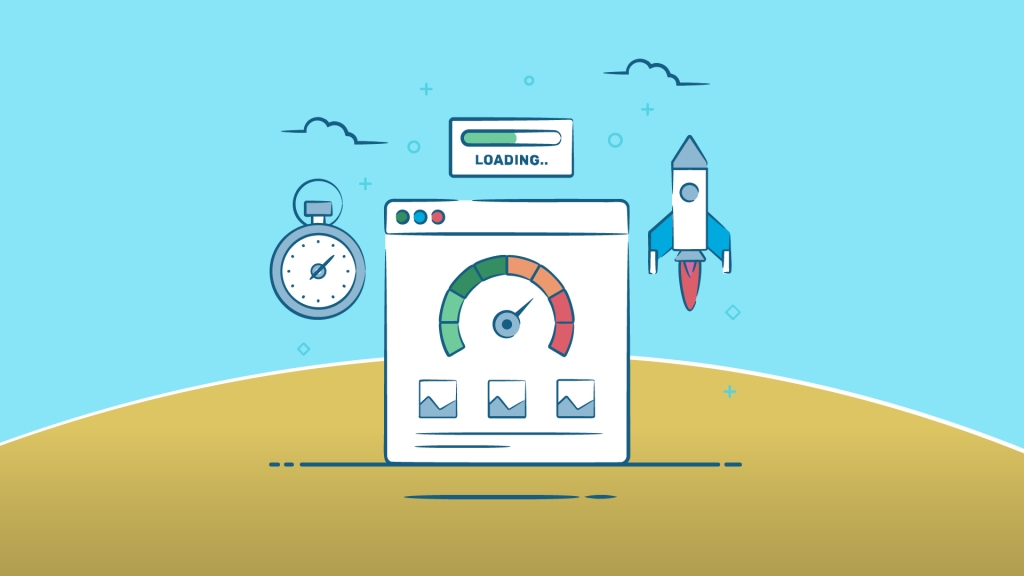
Quantifying the hidden cost of slow pages
I use a plain model I can sense-check in two minutes. Take monthly sessions, multiply by baseline conversion rate to lead, then estimate the conversion drop caused by delays. Convert those lost leads into revenue using average deal size and close rate. That is the monthly opportunity leaking away due to slow pages.
A lightweight example:
- Sessions: 20,000 per month
- Baseline lead rate: 2.5 percent
- Average deal size: 25,000 dollars
- Close rate: 20 percent
- Speed-related conversion drop: 10 percent from a roughly 1 second delay
Lost leads per month equals 20,000 x 2.5 percent x 10 percent, which is 50 leads. Lost revenue potential equals 50 x 25,000 x 20 percent, which is 250,000 dollars in pipeline, month after month. Even if the numbers are half that, it is still real money.
Reference points to keep this honest:
- Google reported that 53 percent of mobile visits bounce if a page takes longer than 3 seconds to load (Think with Google).
- Portent found conversion rates drop roughly 4.4 percent for each extra second of load between 0 and 5 seconds (Portent).
- The BBC observed a 10 percent drop in users for every additional second of load time (Creativebloq).
Mobile widens the gap. Mobile traffic now dominates many B2B sites, yet devices are slower and networks vary. If my hero headline and top value prop do not render within a couple of seconds on a mid-range phone, demo bookings suffer first. For context, more than half of global web traffic comes from mobile devices (Statista).
What faster pages actually deliver
Speed is not a vanity metric. It is a stack of compounding wins I can show on a dashboard.
- Stronger SEO visibility
- Faster pages improve crawl efficiency and reduce the chance that slow templates waste crawl budget. Google factors mobile experience signals like Core Web Vitals into rankings.
- More efficient paid media
- Speed and landing page experience feed Quality Score. Better experience can raise Ad Rank and lower CPC.
- Lower infrastructure costs
- Optimized images, compression, caching, and leaner scripts mean less bandwidth, fewer spikes, and lower serving costs.
- Reduced bounce and abandonment
- Faster Largest Contentful Paint reduces early exits. Field data links faster LCP to higher engagement (Web.dev).
- Better UX and more form starts
- Stable layouts and quick interaction boost confidence. That means deeper scroll and more form initiations.
- AI-surface readiness
- Emerging AI overviews and assistants tend to reference sources that load quickly and are easy to parse. Speed improves the odds of being picked when systems fetch and summarize content (Aleyda Solis’ in-depth article).
One more point I keep front and center: faster sites make analytics cleaner. When pages do not stall, I can isolate whether a message or proof point works without speed masking the answer.
Case studies that map speed to leads
No fluff, just compact B2B stories with hard numbers.
- SaaS platform selling into finance
- Before: Mobile LCP around 4.7 seconds, TTFB averaging 900 ms on main landing pages. Demo request rate 1.8 percent.
- After 8 weeks: Optimized hero images, delayed noncritical JavaScript, preloaded key resources with Early Hints, and cached HTML for logged-out users. Mobile LCP hit 2.2 seconds, TTFB averaged 280 ms. Demo request rate climbed to 2.8 percent - a 55 percent lift in lead rate and a 34 percent drop in bounce.
- Professional services consultancy
- Before: Heavy animation on home and services pages, CLS spikes near the sticky header, and six trackers loading early. Form start rate 3.1 percent.
- After 6 weeks: Replaced animations with CSS where possible, preloaded key fonts, deferred third-party scripts until user input, and fixed layout shifts with explicit image sizes. Form start rate rose to 4.6 percent, qualified leads increased 29 percent quarter over quarter, and average time to first render landed under 1.2 seconds on mobile.
- B2B data provider
- Before: Regionally inconsistent TTFB due to single-region origin and long TLS handshakes. EMEA visitors saw LCP near 5.3 seconds.
- After 10 weeks: Added a modern CDN with edge caching rules for HTML where safe, compressed images with AVIF, and implemented Early Hints. EMEA LCP dropped to 2.4 seconds and session-to-lead conversion increased 24 percent. Paid CPC fell 11 percent as landing page experience improved.
- Niche SaaS with long sales cycles
- Work: Reduced main bundle from 720 KB to 270 KB, delayed heatmapping until scroll, and shipped the hero image as AVIF with proper preload.
- Metrics: LCP dropped from 3.9 seconds to 1.9 seconds on mobile. Sales-qualified opportunities from organic rose 22 percent within 60 days.
The pattern repeats: faster first paint, fewer layout jumps, leaner scripts, and better regional delivery. Those changes map to leads and pipeline, not just lab scores. Correlation is strongest when I confirm improvements in field data, not only synthetic tests. For more examples that tie speed to revenue, see 10 real-world case studies and how just 1 second faster page load made a real difference.
Estimating ROI with a simple formula
I use a plug-in formula I can reuse.
- Baseline leads equals Sessions x Baseline CVR.
- Uplifted leads equals Sessions x Uplifted CVR after speed gains.
- Incremental leads equals Uplifted minus Baseline.
- Incremental revenue equals Incremental leads x Close rate x Average deal size.
- ROI equals Incremental revenue minus one-time and monthly costs for engineering and infra.
To estimate CVR uplift from speed gains, I use a conservative mapping. For pages above 3 seconds LCP on mobile, a 1 second improvement often yields 10 to 20 percent more conversions. I use the low end to stay honest.
Sample scenarios for a site with 40,000 sessions per month, 2 percent baseline CVR, 15,000 dollars average deal size, and 25 percent close rate:
- 1 second faster: Baseline leads 800; estimated CVR lift 12 percent; new leads 896; incremental revenue per month equals 96 x 0.25 x 15,000, which is 360,000 dollars.
- 2 seconds faster: Baseline leads 800; estimated CVR lift 25 percent; new leads 1,000; incremental revenue per month equals 200 x 0.25 x 15,000, which is 750,000 dollars.
- 0.5 second faster: Baseline leads 800; estimated CVR lift 6 percent; new leads 848; incremental revenue per month equals 48 x 0.25 x 15,000, which is 180,000 dollars.
Another sensitivity check:
- Inputs: 12,000 sessions per month; 1.6 percent baseline CVR; projected CVR lift from speed gains 15 percent; average deal size 40,000 dollars; close rate 18 percent; one-time engineering 18,000 dollars; ongoing infra and monitoring 600 dollars per month.
- Math: Baseline leads 192; new leads 221; incremental leads 29; incremental revenue equals 29 x 0.18 x 40,000, which is 208,800 dollars per month; first month net equals 208,800 minus 18,600, which is 190,200 dollars; each following month net equals 208,800 minus 600, which is 208,200 dollars.
Even after subtracting realistic costs, the payback window is short in most B2B settings.
Connecting speed to conversion mechanics
B2B sites are not cart-driven. They win on form fills, demo bookings, and consultation requests. I connect speed to the micro-conversions that move those outcomes.
Micro-conversions that shift with speed:
- Above-the-fold visibility of the headline and proof bar within 2 seconds improves scroll depth.
- Stable layout near the primary CTA increases form start rate. A CLS below 0.1 is a good target.
- Quicker image decode for team photos and badges reduces friction near trust elements.
Macro-conversions that benefit downstream:
- More form starts and shorter time to first input push up completed submissions.
- Cleaner sessions feed cleaner attribution, so I learn which channel and message actually bring in sales-qualified opportunities.
CRO tie-ins that compound with speed:
- Bring the form or calendar inline above the fold on key landing pages; avoid loading heavy widgets until user interaction, then reveal fast. Skeleton screens are fine, but once someone is ready, the actual form should not be delayed.
- Preload the key font and avoid late swaps; visible jumps distract people at the decision moment.
- Keep third-party tags behind a consent or interaction gate; most tags do not need to run before the first tap.
- For technical buyers, consider fast plaintext versions of long papers; give people the option to get to the point without waiting for heavy hero videos.
Myths I hear and what is true instead
I run into the same speed myths at standups. Here is the short list.
- Myth: A good desktop score means I am fine
- Truth: Most traffic is mobile, and mobile CPUs are slower. Test on mobile networks and mid-range devices. Trust field data, not just lab scores.
- Myth: A CDN alone fixes speed
- Truth: CDNs help, but dynamic HTML, fonts, scripts, and images still need care. Cache what is safe, optimize what is heavy, and test from regions where buyers actually live.
- Myth: Speed is one and done
- Truth: Performance drifts - new scripts, new hero videos, new CMS widgets. Set performance budgets and monitor. Fix regressions early.
- Myth: Third-party scripts do not matter
- Truth: They can block rendering, inflate INP, and stall the main thread. Defer, async, or load on interaction. Audit regularly.
- Myth: Only developers can influence speed
- Truth: Marketers choose images, video, fonts, tag manager rules, and page structure. Shared ownership wins.
What to do instead, in plain actions:
- Compress and resize images; prefer AVIF or WebP where supported.
- Inline critical CSS and defer noncritical CSS.
- Minimize JavaScript, split bundles, and delay what is not needed for first view.
- Preload the hero image, key font, and main CSS.
- Remove or gate third-party scripts until needed.
How I run a useful speed test
I do not need to be a performance engineer to run tests that predict conversion.
- Start mobile-first
- Use PageSpeed Insights for field data from the Chrome UX Report plus lab diagnostics. Run it for mobile. Target LCP under 2.5 seconds, CLS under 0.1, INP under 200 ms.
- Use Lighthouse in Chrome DevTools for synthetic checks; run throttled to a slow 4G profile and a modest device class.
- Add a deep view
- Use WebPageTest from buyer geographies. Throttle to 4G. Turn on filmstrip and video to see when content actually appears.
- Inspect the waterfall for render-blocking CSS and JavaScript. Early third-party tags often surprise people.
- Check TTFB on key templates
- Home, service pages, blog articles, and paid landing pages. A healthy TTFB on mobile should live under 500 ms for regions that matter.
- Audit third-party scripts
- Sort by blocking time. If a script does not help someone convert, push it back or remove it.
I prioritize fixes like this:
- Ship the first view fast. Make the hero copy and main image load early; target LCP under 2.5 seconds.
- Stop the page from jumping. Lock down sizes for images, ads, and embeds; keep CLS under 0.1.
- Keep interactions snappy. Reduce main-thread work and long tasks; aim for INP under 200 ms.
A perfect score is not the goal. A fast, stable experience for real users is. Lab scores help me get there. Field data keeps me there.
Why Core Web Vitals matter over time
Core Web Vitals measure how fast the most meaningful content appears (LCP), how stable the page is (CLS), and how quickly it responds (INP). Improving them once is good. Keeping them healthy is where the compounding value lives.
Make consistency the habit:
- Set performance budgets
- Agree on maximum JS size, image weight, and third-party count per template. Treat budgets as guardrails during planning, not a post-launch fight.
- Monitor with real user data
- Use RUM to watch LCP, CLS, and INP by page type, device, and region. Field data reflects what buyers feel.
- Automate checks in the pipeline
- Add performance checks to CI and fail or warn when budgets are exceeded. Catch regressions before they reach production.
- Govern tag manager usage
- Require approvals for new tags, load most tags after user interaction, review quarterly, and remove dead tags.
- Plan recurring audits
- Templates drift. New content formats appear. Keep a recurring slot for performance cleanup.
Why this matters to the channel mix:
- SEO compounds as more pages cross the good thresholds for Core Web Vitals; eligibility and rankings tend to stabilize as quality rises.
- Paid media often gets cheaper when landing page experience improves; stronger speed and stability can push Quality Score up and lower CPC and CPA.
- RevOps benefits, too; clean, fast visits improve attribution and let the team route high-intent leads faster.
- AI surfaces are moving fast; systems that summarize answers favor sources that load quickly and parse cleanly. Speed is a sensible hedge.
The takeaway
If I remember only one thing, I remember this: speed is not only for engineers. It is a business system. When I tune it, my pipeline responds - more organic reach through crawl efficiency and Core Web Vitals signals, better paid results through stronger landing page experience, lower delivery costs with optimized assets and caching, fewer bounces, higher form completion, and better odds of being referenced by AI-driven surfaces.
Short story short: site speed is not a checkbox. It is a habit that keeps paying back. Make the next visitor’s experience faster, steadier, and easier, and the metrics that matter start moving in a way that finally feels under control. If you want a quick benchmark and a prioritized to-do list, try this free audit tool.

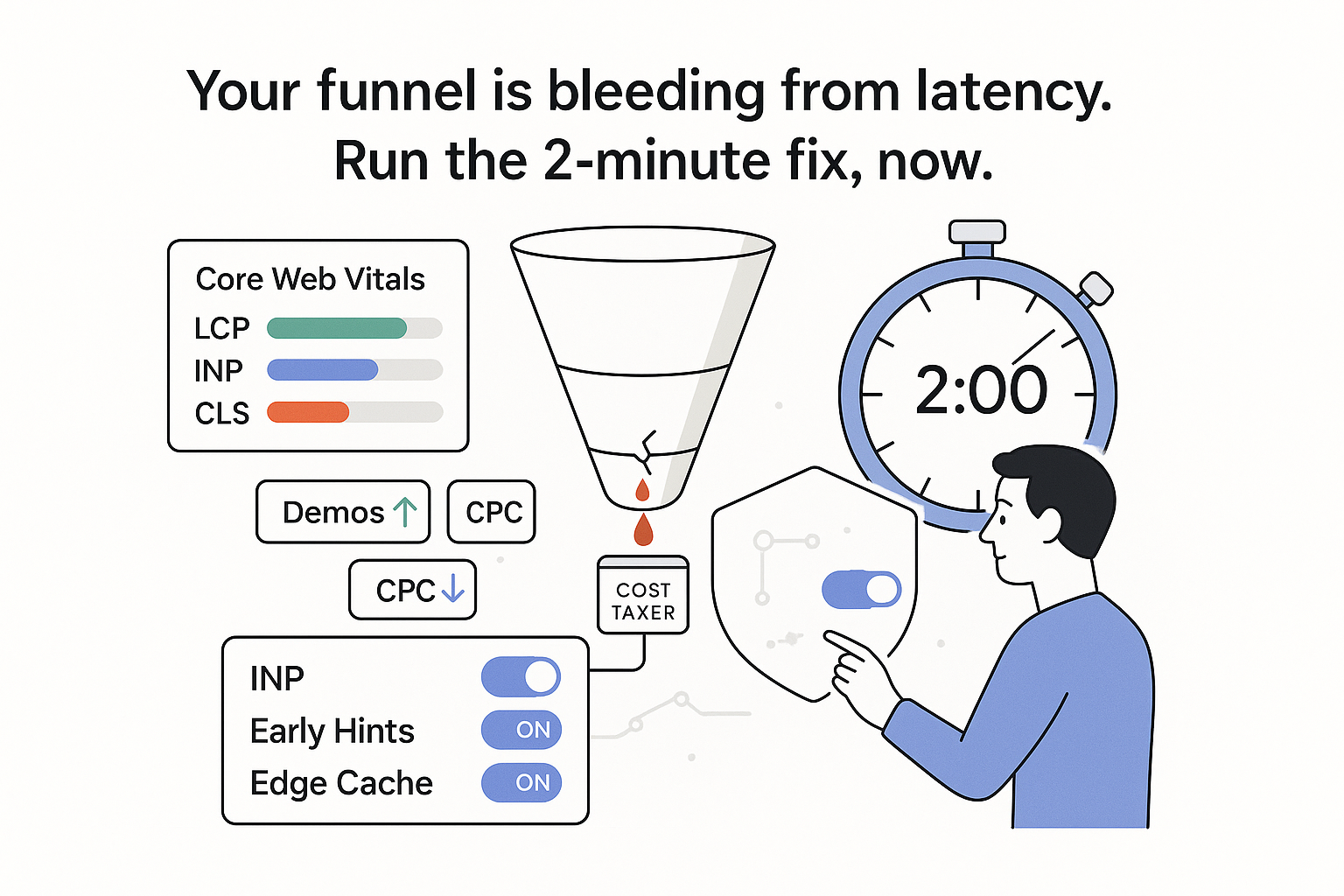

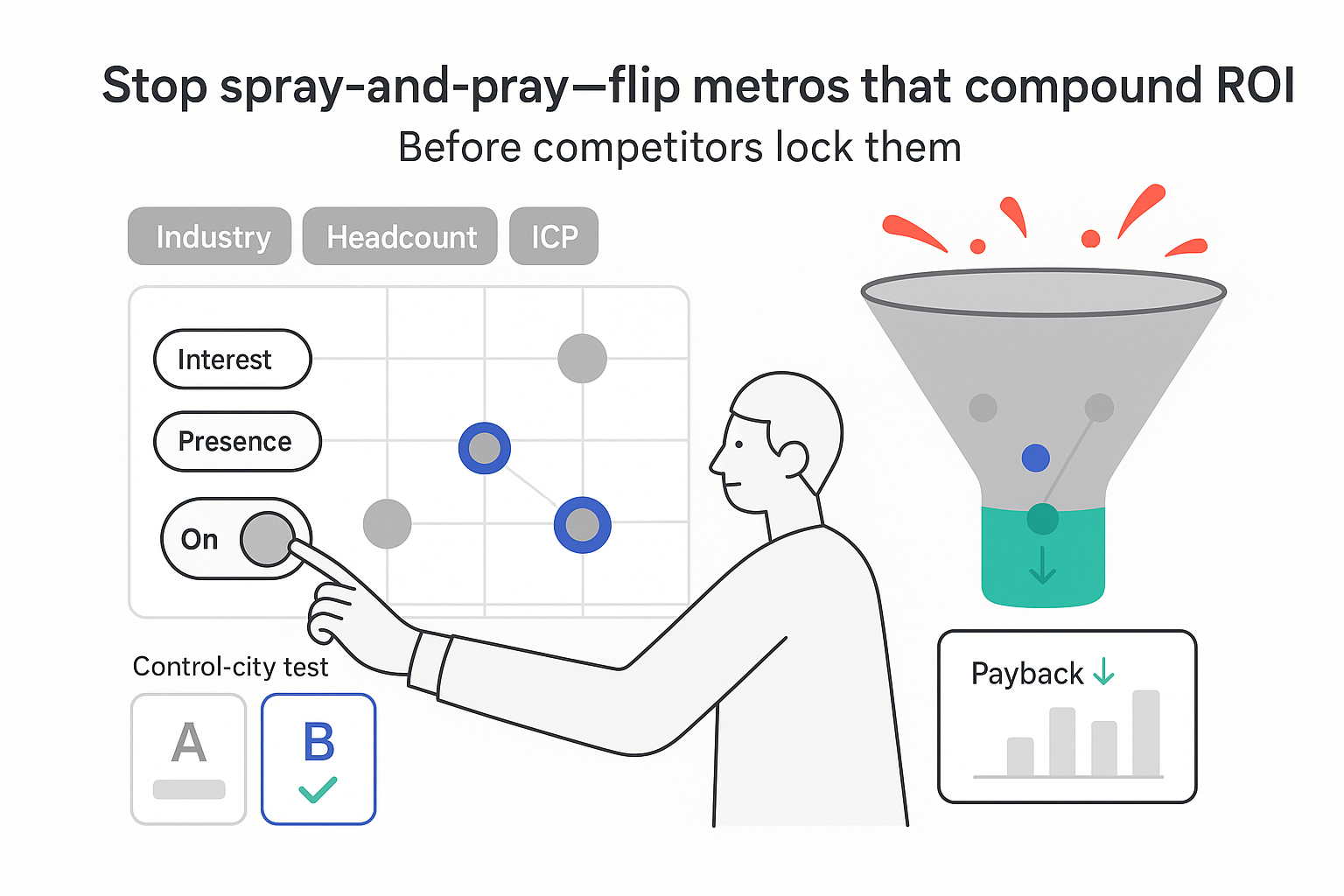
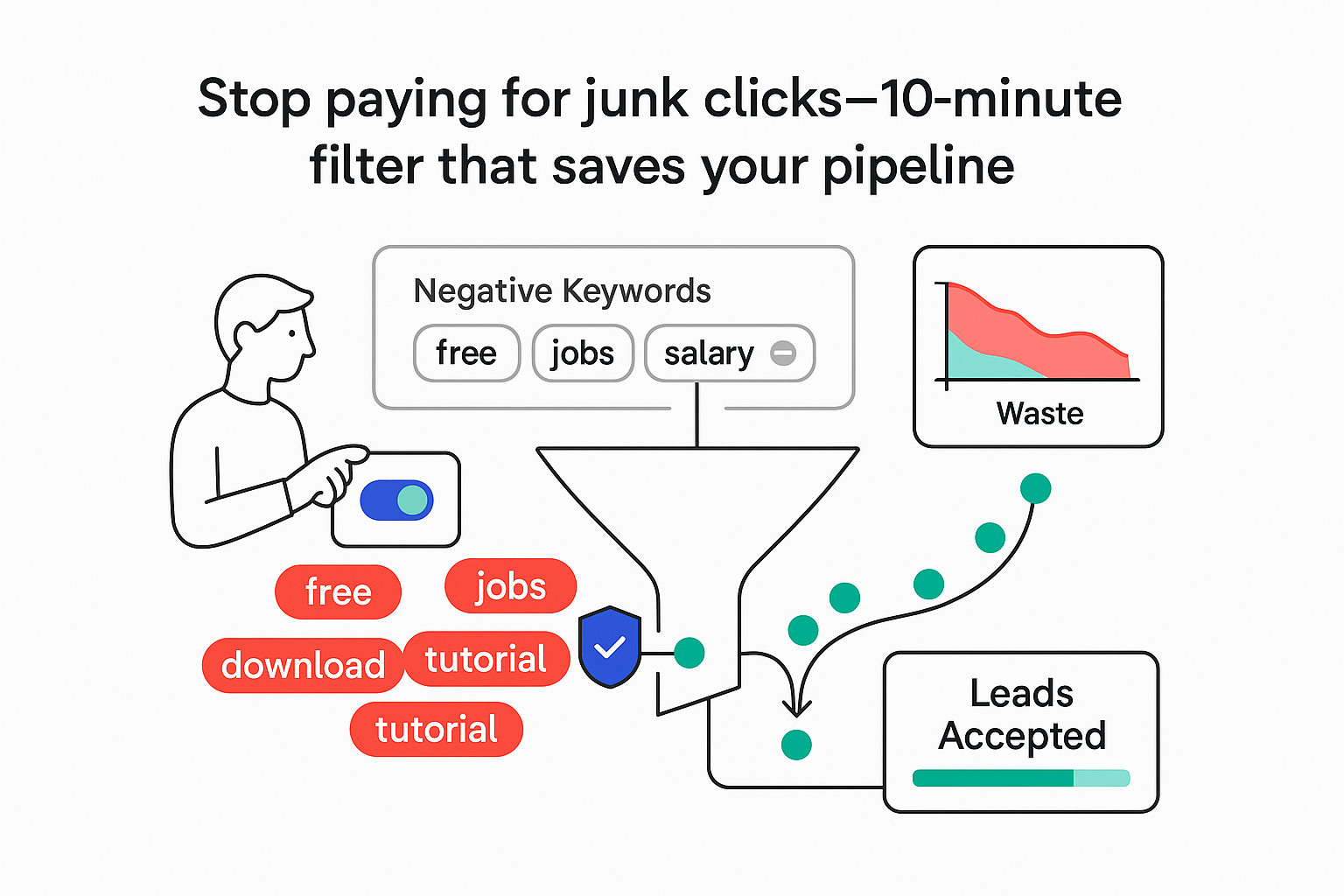
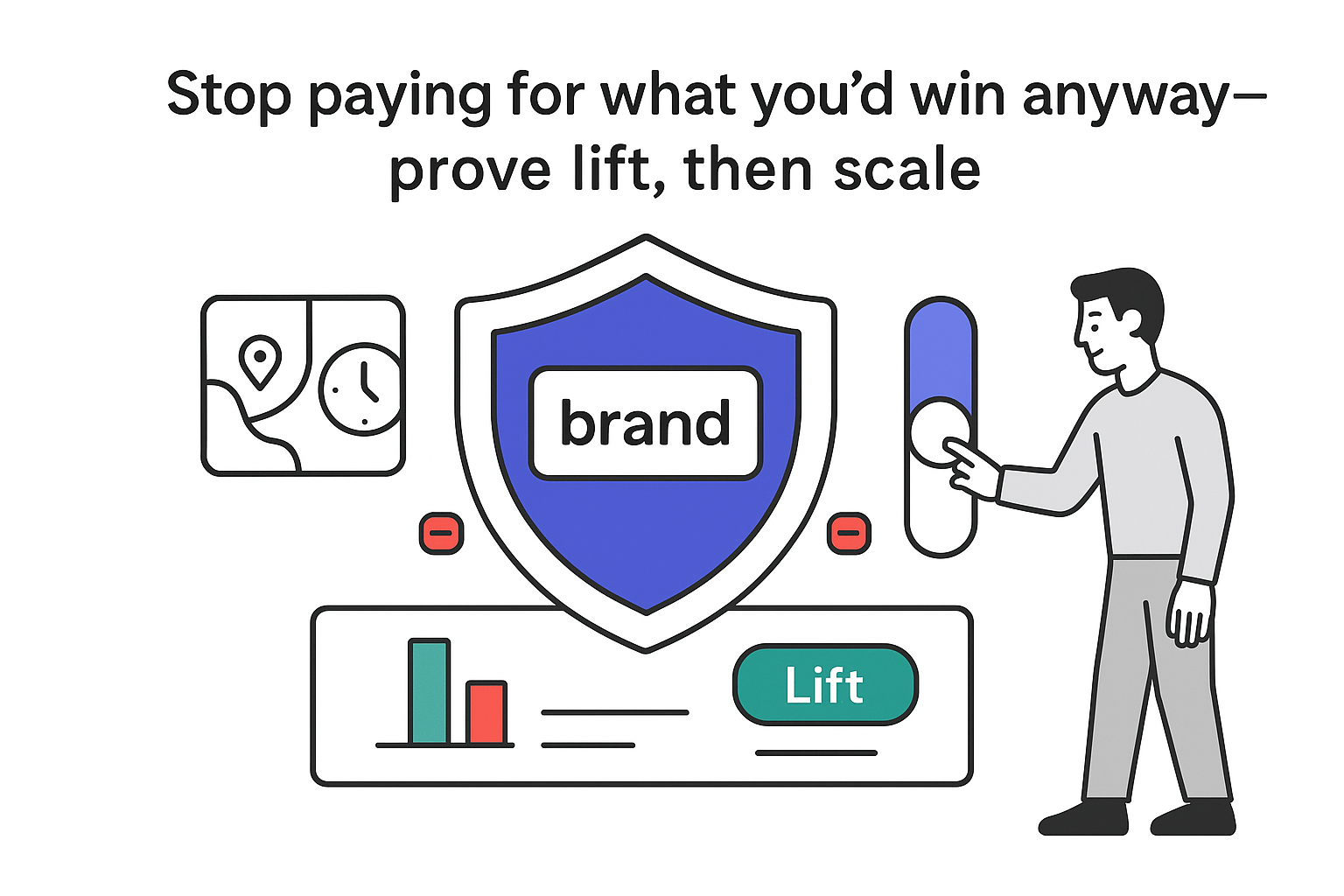
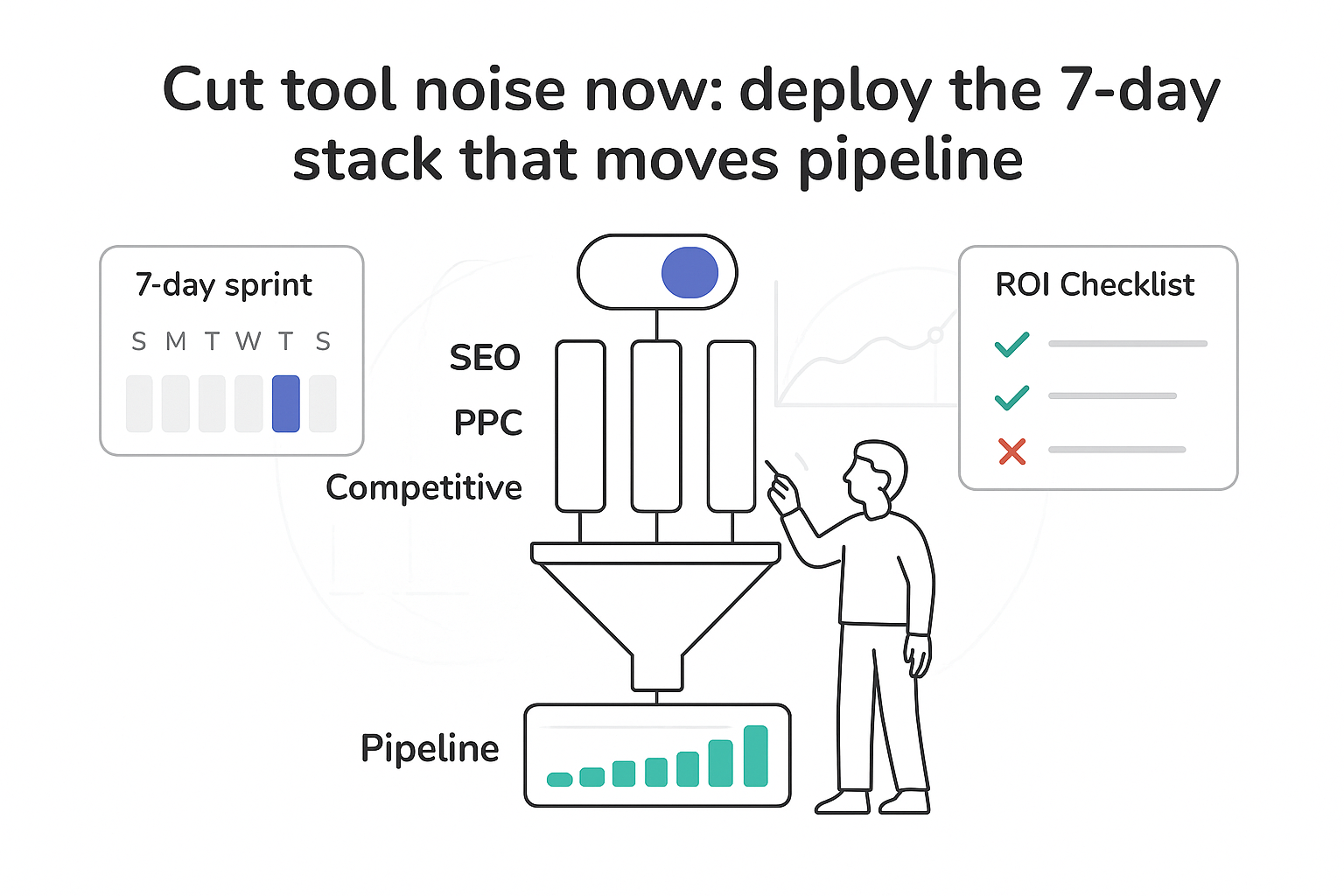
.svg)